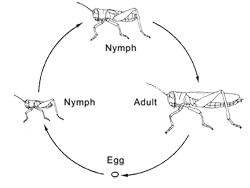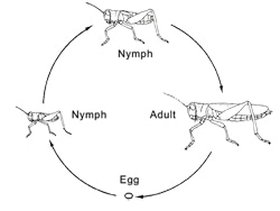

Their nymphs and adults are of comparatively similar form.īelow are the eggs, young nymphs, and an adult Cinara pinea (large pine aphid). They undergo incomplete metamorphosis, with 3 distinct life stages.

Their larvae are aquatic, the adults agile fliers. They have no pupal stage, but their larvae and adults may be very different. Dragonflies), an 'ancient' insect group, are paurometabolous: They undergo incomplete metamorphosis, and have 3 distinct life stages: eggs, nymphs & adults.
#INCOMPLETE METAMORPHOSIS SERIES#
Their larvae undergo a series of moults as they grow, but show little change in form until they moult to become pupae, and moult again to become adults.

After six or seven moults these nymphs become adults, which can reproduce, but continue to moult throughout their life. The newly-hatched (first-instar) nymphs look very like small adults. They are ametabolous: they do not undergo metamorphosis.

The white 'threads' around the head-end (top-right) are trachael linings. Below is a ventral view of the exuvia from a mature nymph of Macrosiphoniella millefolii (yarrow aphid) which has moulted to become an adult sexual female.During moulting, respiration is seriously limited because their trachae are blocked whilst the linings are pulled out ( Camp, et al., 2014). The colour variation among these (wingless) nymphs and (winged) adult Drepanosiphum platanoidis (common sycamore aphids) are because many moulted recently.Īir-breathing insects face a further difficulty. The second shows an adult after it's cuticle has sclerotized (hardened off, and darkened). For instance the first image below shows a newly-moulted 'teneral' adult Clethrobius comes (brown hairy birch aphid) shortly after it's final moult, climbing over its slightly younger (pre-moult) fellows.Casting-off their skins (as exuviae) costs precious materials and energy, it immobilizes the insect, can result in serious injury, and renders insects soft & vulnerable immediately thereafter. Moulting is an expensive, risky and exhausting business for insects. Nontheless, moulting (=ecdysis) has downsides. Since insects generally undergo a number of moults prior to adulthood it must be important to them. The second image shows a similar nymph completing her moult. The first image below shows a young nymph of Symydobius oblongus (Shiny birch aphid) mid-way through her moult. From The Amateur Entomologists' Society Glossary (Feb.


 0 kommentar(er)
0 kommentar(er)
